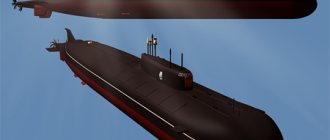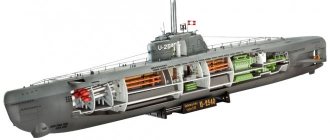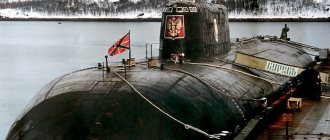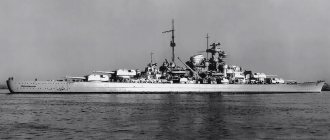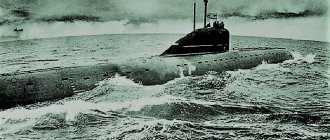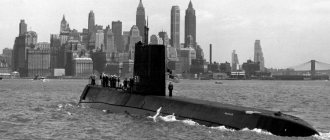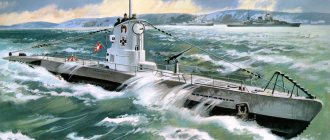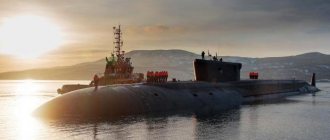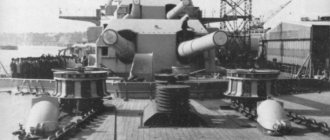Many people remember the terrible prophecy that Vanga uttered back in 1980. At that time, people did not even take everything that was said seriously until the prediction came true exactly, causing millions of people in our country to freeze with horror.
“At the end of the century, in August 1999 or 2000, Kursk will be under water, and the whole world will mourn it.” This was the sound of the prediction, but who in those years could understand that we are not talking about the city of Kursk, which is located at a great distance from the nearest sea, but about the future submarine, named after this city. On August 12, 2000, the prophecy came true, and the K-141 Kursk submarine sank in the cold waters of the Barents Sea.
There were 118 crew members on board the legendary cruiser, none of them survived. The official version of the disaster in the Barents Sea is a leak of hydrogen peroxide and ignition of torpedo fuel, but not everyone agrees with this. Shortly before the accident, the Kursk brilliantly coped with a special secret mission, which is still talked about today. In 1999, the ship made NATO generals quite nervous.
History of creation
The nuclear submarine Kursk is a submarine that has long been considered the best in the Russian Navy. The 949A Antey submarine project was developed in the USSR in the late 1960s.
The Soviet Union was significantly inferior to its main enemy, the United States, in the number of aircraft carriers, so the main goal of the Antey nuclear-powered ships was the ability to quietly approach a well-guarded enemy ship within striking distance and destroy the target.
The Kursk submarine was laid down in Severodvinsk in 1992.
Already in 1994, she was launched and attached to the Northern Fleet. The submarine was considered a special pride also because it was built at a very difficult time for the country. She was considered a symbol of the new Russia.
Construction and testing
Construction of the nuclear submarine began in Severodvinsk at the Northern Machine-Building Enterprise in 1990. In April 1993, the submarine received the name “Kursk” in honor of the Battle of Kursk. K-141 launched from the boathouse of workshop No. 55 in May 1994. It was accepted for operation at the end of December 1994.
The crew was formed back in June 1991 from among the military personnel of the Northern Fleet. The first commander of the vessel is Captain 2nd Rank of the Russian Navy V. Rozhkov.
The crew of the "Kursk" before setting off on a campaign
Description of design
The submarine with the name “Kursk” was a source of pride and the main flagship of the Russian Navy. She was involved in large-scale and specialized exercises, single-handedly eliminating NATO ships during exercises in the Mediterranean Sea (1999). Such indicators were ensured by its design, power unit and weapons.
Frame
The special feature of the submarine is its double reinforced cylindrical hull, divided into 9 compartments. It was quite light, with an anti-hydrolocation type coating. The speed of rising to the surface in seas with ice floes was ensured by the reinforced rounded roof of the conning tower.
The bow rudders are horizontal, located in the nose, hidden in the hull. There were 2 thrusters.
Power plant and driving performance
"Kursk" is a modern and maneuverable boat for its time with a power unit:
- nuclear power plant OK-650 with two pressurized water reactors. Thermal power was 2×190 Megawatts, shaft power was 2×50 thousand hp;
- 2 steam turbines of 90 thousand horses each;
- 2 propellers with 7 blades.
The submarine could descend to a maximum depth of 500 m, the working dive was 420 m. The submarine's underwater speed was 33 knots, and its surface speed was 15 knots. It was offline for 120 days.
Armament
The Kursk nuclear submarine was armed with Granit missiles and torpedoes to counter enemy nuclear submarines. Being an inconspicuous ship with a low noise level, she could cause a lot of inconvenience to the enemy just by being in the waters where enemy ships were based. The submarine's armament was the most modern and allowed it to carry out high-precision strikes against both surface and underwater targets.
The size of the submarine was impressive. Its length was a gigantic 154 meters, and its displacement in immersion mode was estimated at almost 24 thousand tons.
"Kursk" in culture
Several documentaries have been made about the submarine. The most famous of them are the Russian “The Rise of Kursk”, “On the Edge of Life”, “Kursk: 10 Years Later”, “Project 949: Odyssey of a Nuclear Submarine” (awarded the Golden Anchor Grand Prix in 2002), the French “ Kursk: a submarine in troubled waters."
In 2022, the Franco-Belgian feature film “Kursk” was released.
The songs of Yu. Shevchuk “Captain Kolesnikov”, G. Sukachev “Death of Kursk”, 7B “Submarine”, “Letter” by A. Rosenbaum and many others, both domestic and foreign, are dedicated to the nuclear-powered submarine. A Finnish musical group with a Russian-language repertoire chose the name in honor of the submarine.
Gamers were not spared the topic either. The Austrians developed the adventure survival game Undercover Missions: Operation Kursk K-141, the Poles developed the Kursk game of a similar genre.
In 2007, the premiere of a play based on A. Yanovich’s play about the boat tragedy took place at the Riverside Theaters in Sydney (Australia). The work is divided into 2 parts: one tells about the experiences of relatives of 118 sailors, the second about 24 submariners who survived, but did not receive help. The adviser on scenery and costumes was Captain 1st Rank A. Zhirov. At the end, a song by B. Grebenshchikov was performed.
Submarine service K-141 "Kursk"
The Kursk submarine was the pride and flagship of not only the Northern Fleet, but also the entire Russian Navy.
The submarine was repeatedly involved in military exercises, including large-scale ones.
Thus, in 1999, in the Mediterranean Sea, a submarine in autonomous navigation mode successfully carried out a training destruction of NATO ships. Thus, the Kursk eliminated the main enemy forces single-handedly, proving its high efficiency in practice.
Disaster and rescue efforts
The exercises, which took place in the Barents Sea in August 2000, were considered the largest since the collapse of the Soviet Union. Of course, the most important role in the scenario was played by the best submarine in Russia - the Kursk nuclear submarine.
During the tests, the submarine had to hide from possible detection, and at the scheduled time, carry out a practice torpedoing of a mock enemy ship. But the plans were not destined to come true.
At 11-28 local time, an explosion was heard, with a power, according to various sources, from 1.5 to 4 on the Richter scale. It is known that it was recorded by many seismic stations and sensors. It was reported that it was caught as far away as Alaska. After 135 seconds, a second explosion occurred, much more powerful than the first.
Already at 13-50 the first “bells” about the misfortune are heard. The submarine crew does not communicate at the scheduled time. The commander of the Northern Fleet immediately flies to the base in Severomorsk. There are no official announcements yet, but it is becoming clear that something irreparable has happened.
On the same day, at 23-30, the “alarm” mode is declared - from that moment the military begins the search for the missing ship.
In the middle of the night, August 13, the approximate search area becomes clear, but only by 16-20 it is possible to detect the Kursk nuclear submarine. Technical contact is established with her, but it is obvious that the submarine is lying on the ground, that is, it has suffered an accident.
We can say that from this moment the actions of the management begin, which cause at least a shock. The rescue operation was not announced for a long time - only on August 14 at 7 am the first rescuers began timid attempts to descend to the depths. High officials look as if they themselves do not understand what is happening and do not know how to act in the current situation.
This causes a flurry of negative emotions from all Russians, but primarily from the relatives of sailors in distress. Footage of the country's president vacationing in Sochi is flying around the world. Afterwards, many become witnesses to no less heartbreaking videos when Vladimir Putin meets with relatives of submariners. Without exaggeration, the whole world is watching the fate of the nuclear-powered ship.
Almost immediately, Norway, which has a well-trained search fleet, offers its assistance. Its bathyscaphes are capable of conducting search and rescue operations at great depths. But the Russian leadership refuses any kind of help for a long time, and when it agrees, it becomes clear that invaluable time has been lost irrevocably.
Only on August 21, the first rescuers were able to open the hatch and enter the sunken boat. At that moment it became clear that there was no one to save. The Kursk was completely flooded.
Following the investigation, the Northern Fleet command announced that the cause of the death of the Kursk submarine was an exploding training torpedo. After this, the submarine hit the ground with its bow, which led to the detonation of the remaining warhead. The crew was almost completely killed, and those who miraculously managed to survive were given no more than 6 hours.
Alternative cause of disaster
Memorial to the Lost Sailors
Disputes about the causes of the flooding and the veracity of the official version of the disaster continue to this day. The government's hasty statements about the death of almost the entire crew immediately in the explosion and its reluctance to seek foreign help fueled the distrust of the media and people in the stated version.
An alternative version, similar to the official one, was expressed by Vice Admiral V.D. Ryazantsev. He pointed to a chemical reaction when loading a shell into the torpedo tube, as well as the slamming of the ventilation system. The latter are left open during salvo firing, otherwise design flaws will lead to an increase in pressure.
According to Ryazantsev, a torpedo explosion through open flaps caused heavy damage to the crew in the second command compartment. The bow part filled with water, after which it collided with the ground due to the roll. The collision led to the detonation of the remaining ammunition.
Another version is supported by some admirals, officials and media sources abroad. Along it, the American submarines Memphis and Toledo, which were observing the exercises, maneuvered near K-141. There was a collision (or risk of collision) between the Toledo and the Kursk, as a result of which the Memphis fired a Mk-48 torpedo at the Russian submarine.
This version suggests that the truth about the disaster is deliberately hidden in order to avoid worsening relations with the United States. Its publication could well lead to an armed conflict between two nuclear powers.
There are other hypotheses about the tragedy:
- a training missile fired by the submarine ricocheted and hit the bow of the Kursk itself, leading to the detonation of its ammunition;
- the submarine collided with a World War II anti-ship mine;
- collision with another underwater object (including an American submarine), leading to detonation;
- a training missile from the cruiser "Peter the Great" hit the side of the submarine as it surfaced after problems with the torpedo were discovered;
- terrorist act - this option was investigated and recognized as propaganda.
An examination of the logbooks revealed no records of incidents or problems. Last note made at 11:15. No flight recorder records were found either; they were turned off at the time of the tragedy.
Identification of the dead
Over the course of a year, some investigators collected identification signs, interviewing relatives, friends, and colleagues of the deceased submariners, requesting information from medical institutions, even children's clinics. 9 volumes were collected. Also, forensic doctors were provided with medical books found in the 4th compartment.
As of December 19, 73 bodies of dead submariners had been recovered and 65 identified.
In February 2002, it was reported that the crew commander, Captain 1st Rank Gennady Lyachin, and the senior officer on the campaign, Chief of Staff of the 7th Division of the Northern Fleet, Captain 1st Rank Vladimir Bagryantsev, had been identified.
By March 20, 2002, the bodies of 115 dead submariners were discovered and identified.
The bodies of two sailors, Dmitry Kotkov (Koshkov) and Ivan Nefedkov (Nefednov), as well as the chief specialist of Dagdizel, Mamed Gadzhiev, could not be found.
According to the conclusion of a forensic medical examination, the submariners who were in the 9th compartment died from acute carbon monoxide poisoning within 7-8 hours after the disaster.
Investigation
On August 14, V. Putin issued a decree on an immediate investigation into the disaster on the nuclear submarine called “Kursk” - according to Wikipedia, Chairman of the Government of the Russian Federation I. Klebanov was appointed head of the commission.
At the beginning of September 2000, an inspection of all vessels participating in the exercises took place from the pier. Surface and internal surfaces were checked. Requests for inspection were sent to foreign countries, but they did not provide permission.
In 2000, the sunken submarine was checked by the Mir-1 and Mir-2 devices from the scientific vessel Akademik Mstislav Keldysh (late September). In November, a similar survey was carried out by Norwegian divers using submersibles (Halliburton AS from the Regalia ship).
After the submarine was raised, an investigative commission was created. The group consisted of 43 people, mostly investigators working on criminal cases. From September 27 to October 22, the team underwent special training in a similar boat and practiced moving with gas masks and oxygen cylinders. The inspection of the Kursk after lifting was also carried out by 50 specialists from the Rubin Central Design Bureau and commanders of the Antey project submarines.
One of the experts noted the strong smell of gas in some compartments, the almost complete filling of compartment 9 with fuel oil, and the relative cleanliness of compartments 5 and 6. The bulkheads between the compartments are occupied by inter-bulkhead glasses where various items are stored. Between the 9th and 8th there were two. Both contained sheets of paper and pencils, clean and unwritten.
The investigation established that the rescue equipment could not join the site near the 9th compartment due to chips of the mirror surface. In one day we did 6-7 suction tests. It also became known that the 4th compartment accommodated more people than necessary.
On a note! Criminal case under Part 3 of Art. 263 of the Criminal Code of the Russian Federation (“Violation of traffic rules for air, rail, sea transport”, which entails the death of 2 or more people), closed in August 2002.
Logs and recorders
Commander-in-Chief of the Russian Navy V. Kuroyedov said that a recorder and documentation damaged by salt water were found in the 5th compartment (control panel of the main power unit). The search for the recorder also took place in the 3rd compartment (radio communication post, radiometrists, chemists). A total of 22 cassette recordings were found, which were transcribed by experts from the Center for Speech Technologies (St. Petersburg).
It was established that on the day of the disaster the Snegir tape recording equipment was not turned on. According to the regulations, it should have been activated at the time of the exercise. The nuclear-powered ship did not activate the emergency buoy alarm, and the emergency release of the antenna has not worked for several years. The emergency buoy had factory fasteners that prevented it from floating.
There are no records of an accident or emergency in the logs of the central nuclear post, the control logs on the port and starboard sides, or the draft log book. In 3 of Kolesnikov’s notes you can see that there is no light in the 9th compartment, but there is smoke.
Identification of the dead
When the truth was revealed about how many people remained alive on the Kursk, the public was horrified. 23 sailors remained locked in the 9th compartment, who were dead when the submarine was discovered. They waited for rescuers for 2 days.
Investigators spent a year identifying submariners - interviewing relatives and colleagues, receiving information from medical institutions, and analyzing medical records from the 4th compartment. 9 volumes of materials have been collected.
As of December 2001, 73 bodies were recovered and 65 were identified. Commander G. Lyachin and Chief of Staff of the 7th Division V. Bagryantsev were identified in February 2002. As of March 20, 2002, another 115 people have been identified. The bodies of D. Katkov, I. Nefedkov (Nefednov) and the notorious M. Gadzhiev were not found.
A forensic medical examination provided a conclusion according to which the people in the 9th compartment died 7-8 hours after the accident as a result of carbon monoxide poisoning.
Criticism of the investigation
Reliable information about the disaster interests many. Not all journalists, experts, writers, representatives of the Russian and foreign fleets agree with the official point of view. The investigation is criticized due to several facts:
- the president “bought off” rewards from the families of the victims;
- V. Kuroyedov noted the possibility of a collision with an American submarine, but V. Ustinov denied his version;
- the first expedition on July 16 immediately separated the compartment that was hit and left it at the bottom;
- On May 31, the 1st compartment began to be lifted and assembled until July 21, 2002, refusing assistance from Norway;
- On December 6, 2000, RIA Novosti published a report about the pursuit of a foreign submarine in the Barents Sea on August 17;
- Admiral Einar Skorgen, who disagreed with NATO, resigned immediately after the tragedy;
- on the website br.com there is information that the Ministry of Defense I. Sergeev in Brussels announced the priority of the version about a collision with an American ship;
- Memphis called at a Norwegian port on August 18 to repair the antenna. The British ships returned to base due to reactor breakdowns;
- On September 16, the website Korrespondent.net published the material “The Last Ram.” The article was accompanied by a link to the Springer newspaper, which claimed that the cause of the disaster was a collision with a US Sea Wolf-class submarine;
- Lenta.ru reported in September 2000 that the authorities knew what caused the accident;
- there were living submariners in the 5th and 5th bis compartments. The last knocks sounded at 11 o'clock on August 14.
Interests of those killed from 2002 to 2005. represented by lawyer B. Kuznetsov. He did not agree with the official information and noted that by asking for help immediately, 23 people could have been saved. The lawyer agrees with the opinion about the explosion and rejects the version of a collision with an American ship.
D. Vlasov notes that in the last note D. Kolesnikov talks about the impossibility of opening the emergency hatch cover. One sailor began tapping out distress signals that had been heard on the Peter the Great, but were mistaken for SOS from another ship. Hence the theory that the Kursk could collide with a foreign submarine.
Destruction
After the first explosion, the 1st compartment quickly caught fire, and the shock wave spread to the second. The fires spread to the remaining departments through ventilation pipes.
The second explosion cut off the 22nd frame, located between compartments No. 1 and No. 2. It, moving like a piston, began to crush the equipment and the flooring with a layer of 22 mm, cutting off the welded parts of the hull. After lifting, it was discovered that the 22nd frame flew off to the 43rd (between compartments No. 2 and No. 3). The second shock wave was stopped by the aft bulkhead of the 5-bis compartment, which bent in the shape of an arc.
Alternative versions of the death of the submarine
It so happened that the Kursk disaster became one of the biggest mysteries in Russian history. And there were more than enough reasons for this.
Firstly, the actions of the Russian leadership sometimes defy logical justification.
Secondly, a lot of doubts are generated by the rescue operation, which seemed to be artificially delayed as much as possible.
Thirdly, the Russian military was extremely reluctant to the idea of raising the submarine, although it is logical to assume that this would simplify the investigation and shed light on the cause of the tragedy. As a result, it was decided to raise the nuclear submarine in parts, with the bow section cut off, and this is at least alarming.
The country's leadership's excuses that this was a necessity due to the incomprehensible state of the nuclear engine still left doubts.
Fourthly, today we know a huge amount of materials similar to the truth, proving the presence of American submarines in the Barents Sea, which could, by pure chance, cause the death of the flagship of the Russian fleet.
It will probably never be possible to find out the whole truth about the Kursk tragedy. Even future generations will most likely not be able to understand what it was: the possible start of the Third World War or banal carelessness.
And all this mystery, of course, gives rise to a large number of conspiracy theories and theories with a lot of evidence and refutations. The most popular alternative versions of the Kursk tragedy are as follows:
- Accidental collision with an American spy submarine;
- Criminal negligence in the installation of live torpedoes;
- Deliberate sabotage of exercises. It is known that there were representatives of China in the fleet who were interested in concluding large contracts for the supply of Russian weapons. Probably due to the actions of some third party, the submarine was liquidated for an unknown reason. Of course, at the highest level the truth was revealed quickly, but what followed was a political game, and the people were “fed” the most plausible version of what happened.
Perhaps no version was as popular as the probable collision with overly “curious” NATO submarines.
It is known for sure that large-scale exercises in the North of Russia attracted special attention from the United States.
It later turned out that the Memphis submarine had the task of getting as close as possible to the exercise arena and observing the unfolding events. From this moment the most controversial hypotheses begin, which are often supported by many facts.
One of the main engines of this version is the investigative film by French director Jean Michel Carré, “Submarine in Troubled Waters.” So, it is known (photo and video evidence was even provided for this) that the Memphis was put in for urgent repairs at the nearest Norwegian base immediately after the disaster with the Russian submarine.
Many eyewitnesses and rescuers claim to have heard distress signals from the Kursk, which means that the crew could have survived for a long time. This does not fit with the official conclusion that almost all the sailors died instantly from explosions and flooding.
On the other hand, the distress signals could have come from the damaged Memphis, which either collided with a Russian submarine or was hit by a retaliatory torpedo launch.
The proven fact that two explosions were recorded also indicates a possible “shootout”.
In addition, a rescue buoy released from a submarine was found in the waters near the crash site. In turn, most sources claim that the buoy on the Kursk remained in its place.
The official version of the explosion of a training torpedo on board the nuclear submarine also caused a great resonance. In some sources you can find facts that simply speak of unacceptable sloppiness in the Russian fleet.
The newest torpedo, fueled with hydrogen fuel, was placed incorrectly, which led to the leakage of the flammable substance, its further ignition, and then the detonation of the main warhead. According to this theory, the submarine was not adapted to install weapons of this class, and in preparation for the exercises a number of glaring mistakes were made, which, overlapping each other, ultimately led to a tragic outcome.
Some time after the tragedy, a version according to which Vladimir Putin deliberately hid from the public the true causes of the disaster in the Barents Sea gained high popularity. This theory is supported by the fact that all the big bosses who had access to information or carried out rescue work were sent on vacation shortly after the end of the investigation.
The decision, of course, taken by the president, according to which the submarine was raised in a sawn state, also made the public doubt the transparency of the investigation.
The entire crew was awarded the Order of Courage posthumously, and the captain was awarded the honor of becoming a hero of Russia. And even here the impression was created that the government was trying to get out, because formally high ranks were given for exercises in the Mediterranean in 1999.
There is a large amount of evidence that the Russian leadership was in close contact with American intelligence agencies immediately after the incident. In addition, it became known that a few days later the United States forgave Russia a large debt, and the CIA director secretly visited Russia a few hours after the incident, when the boat had not even been looked for. In turn, this makes us believe that the Russian President deliberately took into account the version of the mistake of his own military and made it public in order to avoid a possible military conflict with the United States.
Popular discontent was also provoked by Vladimir Putin’s subsequent interview with the famous American journalist and TV presenter Larry Obrian. To the presenter’s question, “What happened to the Kursk submarine?”, the Russian President answered with a grin: “It drowned.”
A wide public outcry broke out again when the bodies of the submariners were recovered. Among other things, it became known about a letter from Captain Dmitry Kolesnikov. The people's minds were excited by part of the note, which was immediately classified as “Secret”. The management referred to the fact that the cut out part of the letter was of a purely personal nature, but the captain’s wife had still not received the original note from her husband.
Who knows, perhaps the surviving sailors, in complete darkness, by touch, wrote words that ordinary people were not supposed to know.
Memory
The tragic death of the newest Russian submarine did not leave anyone indifferent, it would seem. Since then, many poems and books have been written that are dedicated to the memory of the dead sailors. The film “72 Meters,” based on the tragedy, received wide success in cinemas.
People's memory is immortalized in many monuments that are installed throughout the country.
The most famous of them are located in Moscow, Kursk, Severodvinsk and Murmansk.
All this is evidence that the tragedy with the Kursk nuclear submarine is a big wound in the memory of the people of Russia, which is why there is so much that is not understood and accepted in this story, and what is left unsaid still resonates with pain and powerlessness in the minds of millions of people.
[edit] Gallery
| 1 | 3 | yes | Show | Hide |
|
Track written by capable composer Matt Elliott. The wine is 11 minutes long.
| Video gallery | ||||
| 1 | 3 | yes | Show | Hide |
| Instrumental track by the racially Swedish post-rock band Ef | Travel is dangerous from highlanders in skirts | |||
| Puerto Ricans A Wilhelm Scream with soul-stirring lyrics | Begirlich in dem hertzen min. The first album of the German darkwave band Helium Vola - Hellium vola - is dedicated to the sinking of the Kursk nuclear submarine. | Digimortal - 100 nights | ||
| They are. Without cosplay, but with dolphins and piglets | Tommy Cox - Kursk |
